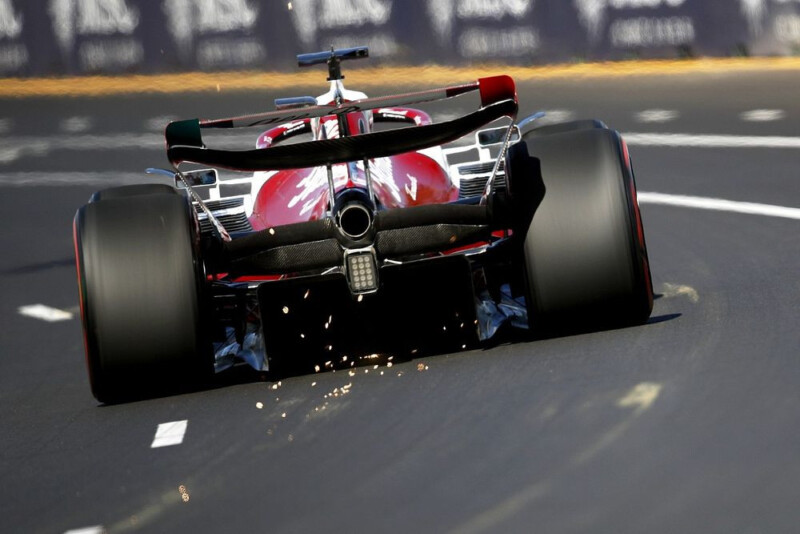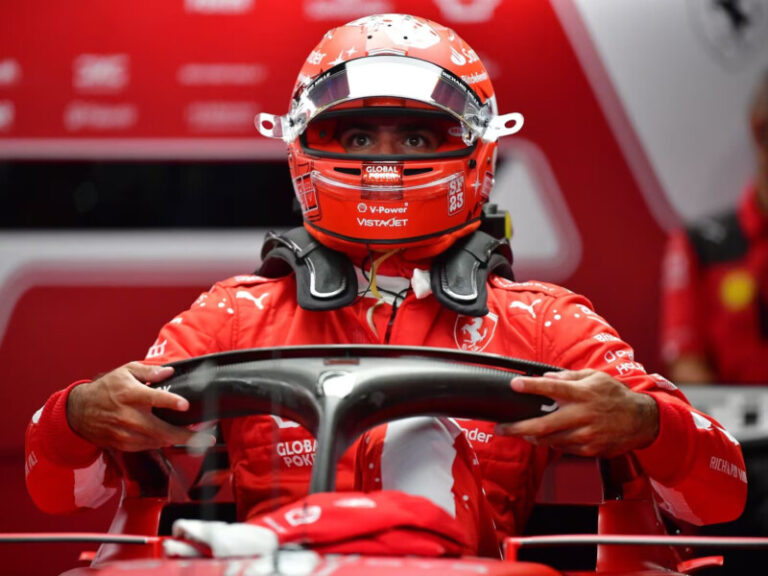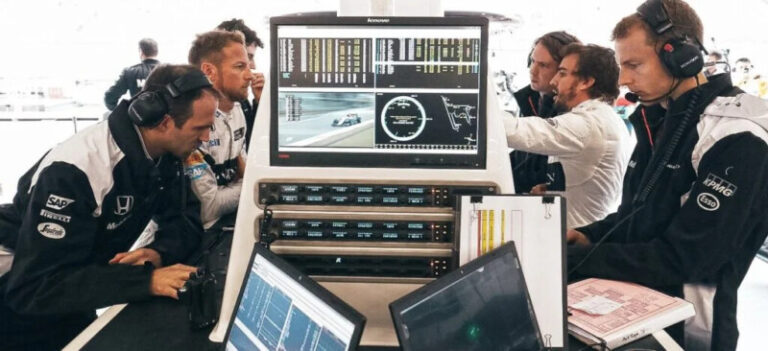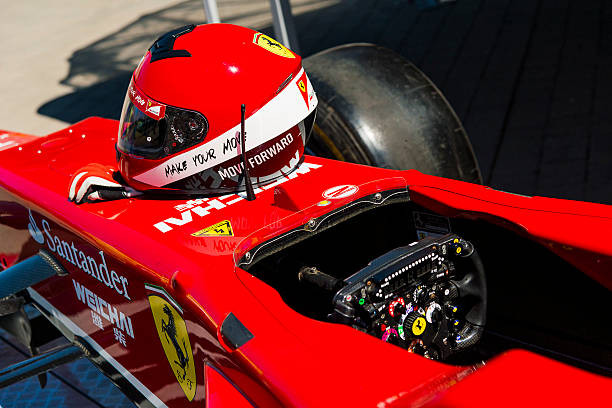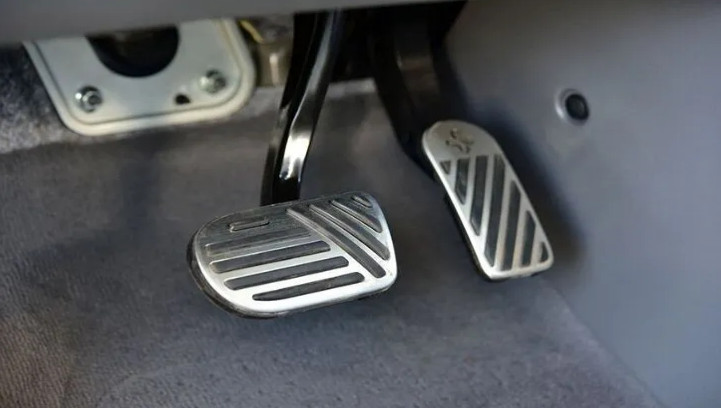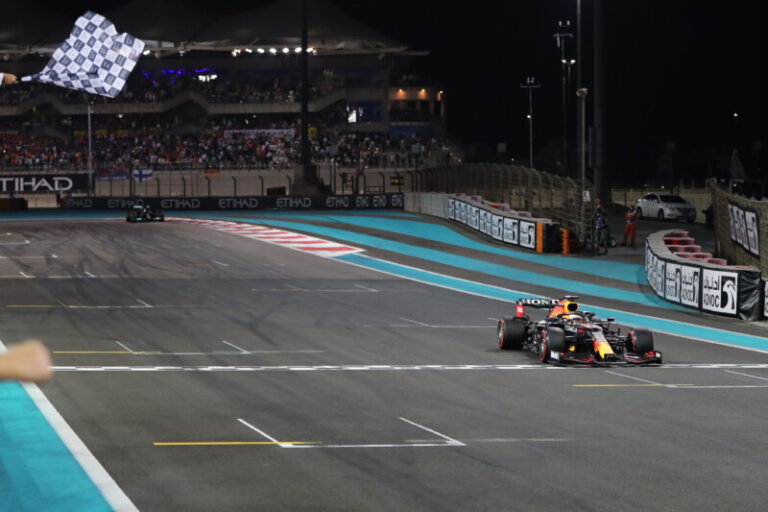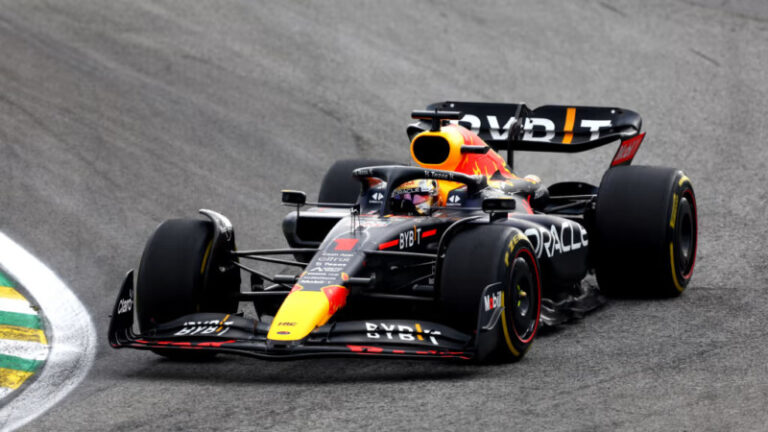What is DRS in Formula 1? An In-Depth Look at the Drag Reduction System
The Drag Reduction System (DRS) has been one of the most controversial and debated technologies in Formula 1 over the past decade. As an adjustable rear wing designed to facilitate easier overtaking, DRS aims to increase wheel-to-wheel racing and overtaking opportunities. However, its artificial speed boosts have drawn criticism from racers and fans alike. In this article, we take an in-depth look at what DRS is in Formula 1, its origins and evolution in the sport, how it works, where it can be used, and the debates surrounding its implementation.
Introduction to the Drag Reduction System in Formula 1
The Drag Reduction System (DRS) is a form of driver-adjustable bodywork aimed at aiding overtaking maneuvers in Formula 1. The system allows drivers to reduce aerodynamic drag when pursuing a car on track, increasing their straight line speed through designated DRS zones.
DRS stands for Drag Reduction System. It is a mechanical system integrated into the rear wings of Formula 1 cars that enables drivers to reduce aerodynamic drag and gain higher top speeds when activated. The purpose of DRS is to aid overtaking in Formula 1 and encourage more wheel-to-wheel racing.
By reducing rear downforce levels, DRS lowers drag and gives chasing drivers an artificial speed boost. This helps them get into a position to attempt overtakes that would otherwise be very difficult when stuck in turbulent air.
DRS was introduced in Formula 1 in 2011 to make overtaking easier and improve the on-track spectacle. However, its implementation sparked debate and controversy within the F1 community.
Critics argued DRS enables artificial, easy overtakes and reduces the skill involved in passing maneuvers. Concerns were also raised about the safety implications of using movable aerodynamic devices during racing.
Despite the debates, DRS has remained in Formula 1 as a central overtaking aid. But discussions continue over its necessity as cars and racing regulations evolve.
Why is the Drag Reduction System Used in Formula 1?
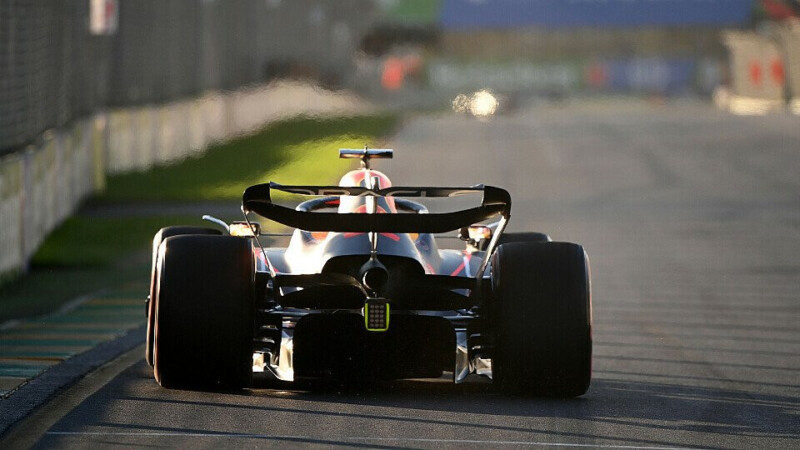
The introduction of DRS in 2011 came after concerns that Formula 1 had become too challenging for overtaking. But its implementation was not without opposition. Here we examine the origins of DRS and why it has remained in F1.
By the early 2010s, many believed overtaking in F1 had become too difficult and detrimental to the racing spectacle. Turbulent air from leading cars disrupted airflow over chasing cars, making close pursuits very challenging.
To address this, the FIA introduced DRS in 2011 to make overtaking easier and increase on-track action. The system gave drivers an adjustable rear wing to reduce drag on straights when activated.
However, DRS was not without controversy. Many teams, drivers and fans criticized it as an artificial device that handed overtakes to drivers instead of rewarding skill.
Former F1 driver Juan Pablo Montoya famously compared DRS to “giving Picasso Photoshop”. Others argued it deregulated F1 engineering and reduced the importance of aerodynamics.
Despite criticisms, DRS has been retained in Formula 1 as a means of enabling closer racing and more overtaking opportunities.
Rule changes have aimed to reduce aerodynamic turbulence from leading cars, but DRS is still deemed necessary to facilitate passing. Its usage and regulations continue to draw discussion within the F1 community.
Evolution of DRS in Formula 1
Since its debut in 2011, DRS has remained an integral overtaking aid in Formula 1. But there have been hopes that improving car design could lead to the discontinuation of the Drag Reduction System.
In the past decade, Formula 1 cars have undergone major aerodynamic regulation changes aimed at reducing disrupted airflows from leading cars.
Many hoped these new generation F1 cars would enable closer racing and minimize the impact of dirty air. In turn, this could lead to overtaking without requiring DRS for an artificial speed boost.
DRS was implemented in 2011 amid the era of open engine competition in F1. Engine performance disparities between teams further hampered overtaking.
The introduction of fixed engine regulations in 2014 aimed to equalize power unit performance. However, DRS has been retained as turbulence remains an issue with modern F1 aerodynamics.
Recent regulation changes have again focused on updating F1 aerodynamics to reduce disrupted airflows.
The 2022 rules reintroduced ground effect to achieve this. However, DRS remains in use as turbulence and dirty air continue affecting overtaking capabilities.
How Does DRS Work in Formula 1?
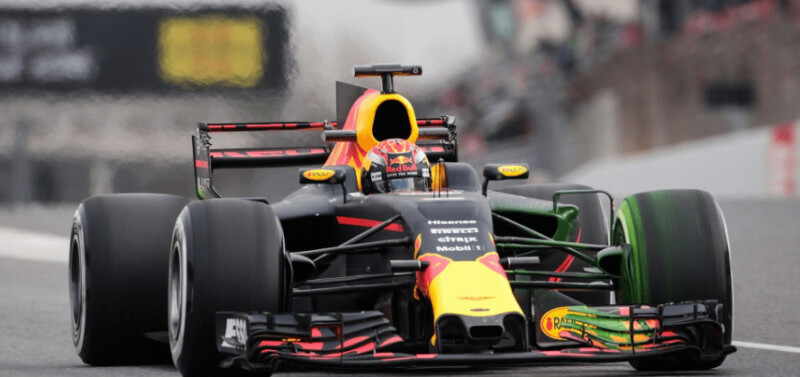
The Drag Reduction System might sound complex, but the mechanism behind DRS is relatively straightforward. Here we break down how DRS works in Formula 1.
DRS utilizes an adjustable flap integrated into the rear wing of F1 cars. This flap is controlled by an actuator and hydraulic system.
When DRS is activated, the flap opens to flatten the rear wing angle. This reduces downforce and drag, allowing higher top speeds.
When deactivated, the flap closes and rear wing returns to its normal angle for maximum downforce.
Drivers can activate DRS when within 1 second of the car ahead at detection points on track. They press a button on their steering wheel to open the DRS rear flap.
This can only be done in specified DRS zones on straights and is typically not permitted through corners. Usage is also restricted during practice and qualifying sessions.
Strict rules govern DRS activation to ensure safety. DRS cannot be used in the first two laps after race starts and restarts. Overtaken drivers can also activate their DRS within 1 second of the car ahead.
DRS through corners is generally prohibited except some shallow angles. The FIA can also adjust DRS rules on a track-by-track basis for safety.
DRS Zones at Formula 1 Circuits
The FIA designates DRS zones at each Formula 1 track to control where drivers can activate the system to attempt overtakes. The number and location of DRS zones is decided for every circuit.
At a minimum, each circuit’s main straight has a DRS activation zone so drivers can utilize the speed boost on the longest straight.
Some tracks have very long main straights such as Monza, allowing extended DRS usage for overtakes into Turn 1.
For certain tracks notoriously difficult for overtaking, extra DRS zones can be added. These are typically on smaller straights and allow a second chance to pass.
Examples include a second zone on the backstraight in Canada and zones on the two short straights in Hungary.
DRS usage through corners is generally prohibited by the FIA for safety reasons. But exceptions have been made for specific shallow corners at a few tracks.
The FIA constantly evaluates DRS safety and can amend zone locations and usage during a race weekend if deemed too dangerous.
Consequences and Risks of DRS Failures
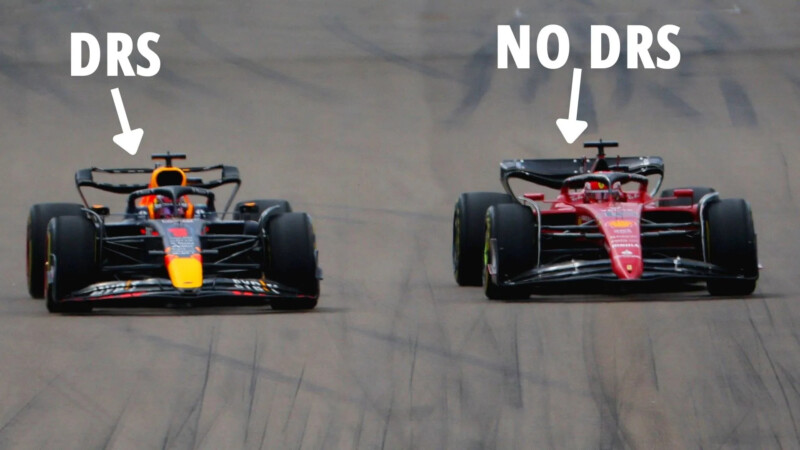
While DRS enhances racing when functioning properly, system failures can create issues for drivers. DRS malfunctions usually require pit stops for repairs and can even lead to crashes.
If DRS fails in an open position, drivers lose rear downforce and the car balance shifts forward. This makes cornering challenging.
Stuck open DRS can lead to crashes from loss of control, like Marcus Ericsson at Monza in 2018 after hydraulics failure.
If DRS fails, drivers are instructed to manually close the rear wing flap by pitting. If they cannot make repairs, black and orange flags require DRS be shut.
These mechanical failures disadvantage drivers during races, especially when chasing rivals closely.
In 2012, Michael Schumacher retired from the European Grand Prix after his DRS flap stuck open. Hydraulic issues have caused other DRS failures leading to crashes.
Reliability of the complex mechanisms involved remains an engineering challenge.
How Formula 1 Drivers Utilize DRS
DRS can only be activated under specific conditions during Formula 1 weekends. Here we look at how drivers strategically utilize DRS based on its rules and regulations:
Drivers can only activate DRS when:
- Within 1 second of car ahead at detection point
- In designated DRS activation zone
- Not in first 2 laps after race start/restart
In practice and qualifying, DRS usage is unrestricted in terms of proximity to other cars. However, activation is still limited to certain zones for safety.
Teams refine DRS strategies and use the speed boosts in qualifying to optimize lap times.
DRS usage varies across different motorsport series. Formula 2 allows unlimited use in races. IndyCar permits push-to-pass boosts anytime.
In Formula 1, DRS remains a strategic tool for drivers when within range behind rivals.
The Ongoing DRS Debate in Formula 1

Over a decade since its introduction, DRS continues to be a polarizing technology in Formula 1. Discussions persist over its necessity and future as cars evolve.
DRS or similar systems are used across motorsport, but regulations differ significantly. Formula 1 has among the strictest DRS usage rules.
Critics argue loose DRS restrictions diminish driver skill requirements in racing categories like Formula 2.
New F1 aerodynamic regulations in the past decade intended to reduce dirty air and potentially replace DRS have not eliminated the need for the drag reduction aids.
As future car design progresses, debates continue regarding restricting DRS zones or phasing it out completely.
Overall, DRS remains a fixture in top-level motorsport as a means of facilitating closer racing and more overtaking opportunities.
But debates around the technology persist over whether it promotes artificial racing or suitably enhances the spectacle.
Conclusion
The Drag Reduction System (DRS) has been a fixture in Formula 1 since its introduction in 2011, but remains a highly debated overtaking aid. The adjustable rear wing technology provides drivers a speed boost by reducing drag. But criticisms persist around it enabling gimmicky overtakes.
DRS continues to play a major role in F1, with its usage and zone locations closely regulated for safety and strategic purposes. Ongoing car design evolution may shape DRS usage in future, but it remains a key component of racing and overtaking within modern Formula 1.

